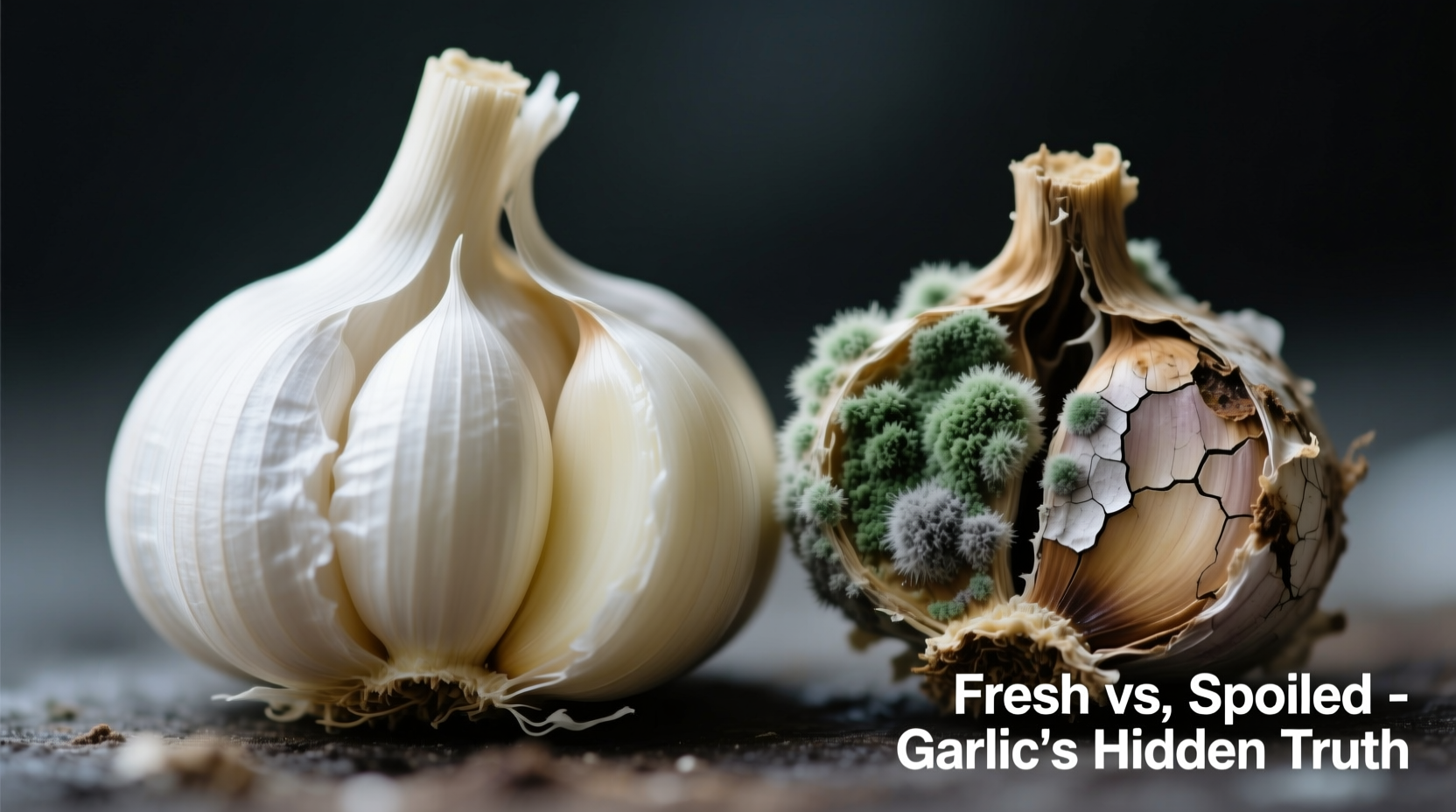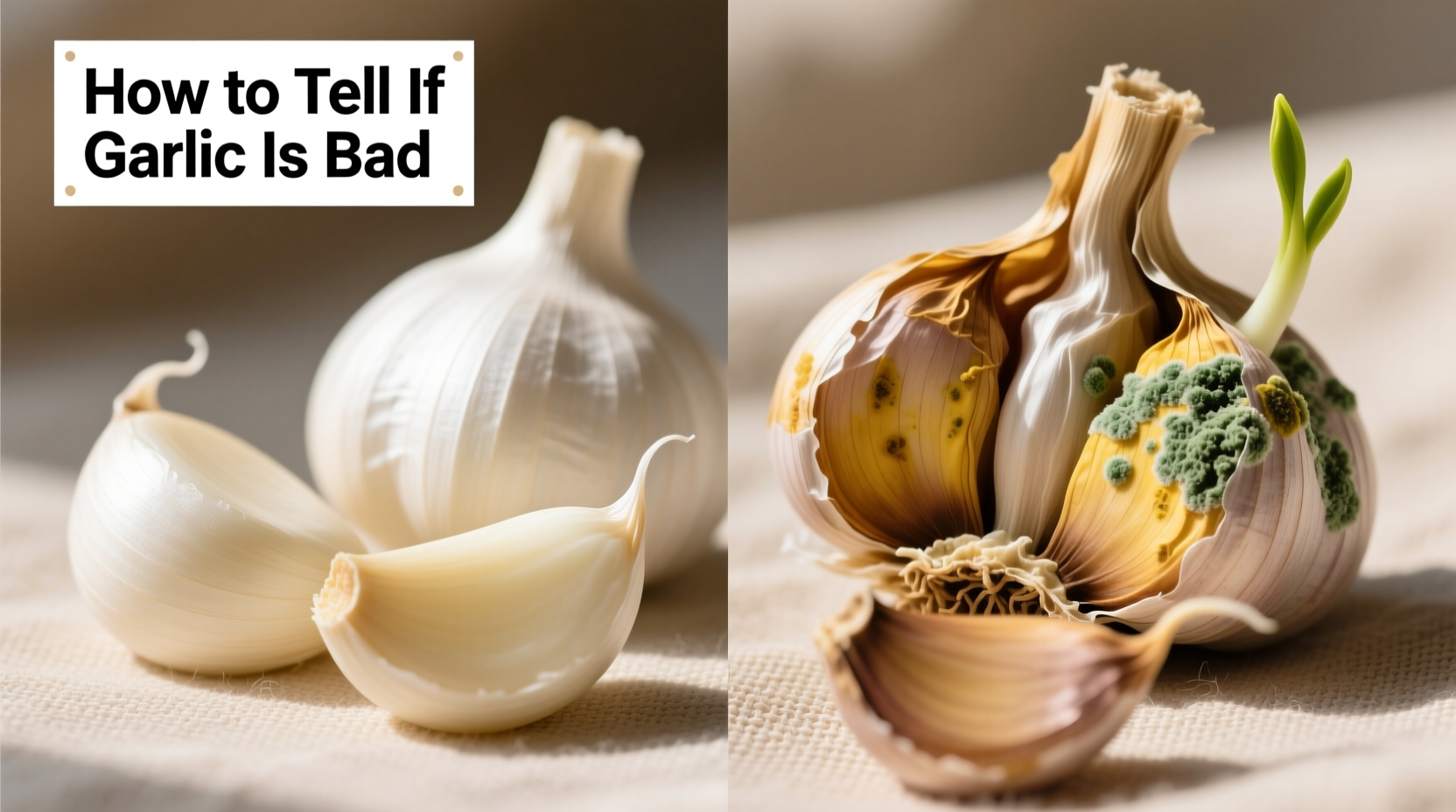Discover exactly how to tell if garlic is bad with these practical, science-backed indicators that every home cook needs to know. You'll learn to spot dangerous spoilage signs before they compromise your health or ruin your favorite recipes.
Why Garlic Safety Matters More Than You Think
While garlic spoilage might seem like a minor kitchen issue, USDA food safety guidelines emphasize that improperly stored garlic can harbor harmful bacteria. Unlike many vegetables, garlic's dense structure can hide internal spoilage while appearing fine on the surface. Recognizing early warning signs prevents food waste while protecting your health.
Your Step-by-Step Garlic Inspection Process
1. The Visual Check: What Your Eyes Reveal First
Before touching your garlic, perform a visual assessment in natural light. Healthy garlic bulbs maintain their papery skin with consistent color—typically white, purple, or off-white depending on variety. Warning signs include:
- Mold growth (white, green, or black fuzzy patches)
- Significant discoloration (yellow, brown, or black spots)
- Excessive sprouting (green shoots longer than 1 inch)
- Wrinkled or shriveled appearance beyond normal drying
According to University of Minnesota Extension research, minor sprouting (small green shoots) doesn't necessarily mean garlic has spoiled—it simply indicates aging. You can safely remove these sprouts and use the remaining clove.
| Characteristic | Good Garlic | Bad Garlic |
|---|---|---|
| Appearance | Firm, dry, papery skin, consistent color | Mold, dark spots, excessive sprouting, soft areas |
| Smell | Clean, spicy, characteristic garlic aroma | Sour, unpleasant, or no distinctive smell |
| Texture | Firm, crisp cloves with tight skin | Soft, mushy, slimy, or dry and brittle |
| Internal Condition | Uniform white or off-white color | Yellow, brown, or black discoloration inside |
2. The Smell Test: What Your Nose Knows
Fresh garlic emits a clean, sharp aroma even before peeling. Gently squeeze the bulb—spoiled garlic develops distinct off-odors:
- A sour or vinegar-like smell indicates bacterial growth
- No discernible garlic scent suggests complete spoilage
- Rancid or musty odors signal advanced decomposition
Remember that roasted or cooked garlic has a different aroma profile—these spoilage indicators apply specifically to raw garlic.

3. The Texture Assessment: What Your Fingers Detect
Gently press the garlic bulb with your fingertips. Properly stored garlic maintains firmness throughout. Warning signs include:
- Soft spots that yield easily under pressure
- Slimy or sticky texture on the surface or between cloves
- Excessive dryness causing cloves to crumble
- Mushy consistency when squeezed
As noted in USDA Agricultural Research Service documentation, garlic stored in humid conditions often develops surface moisture that accelerates spoilage. Always store garlic in a cool, dry place with good air circulation.
4. The Internal Examination: When to Peel Back the Layers
If visual, smell, and texture tests raise concerns, carefully peel one clove for internal inspection. Cut through the center to check for:
- Discoloration (yellow, brown, or black streaks)
- Wet spots indicating bacterial growth
- Unusual textures like sponginess or separation
Never taste garlic that shows clear spoilage signs. If internal examination reveals significant discoloration or moisture, discard the entire bulb immediately.
Special Considerations for Different Garlic Types
While these guidelines apply to standard bulb garlic, consider these variations:
- Single clove garlic (often called pearl garlic) spoils faster due to less protective layers
- Pre-peeled garlic in jars requires refrigeration and has a much shorter shelf life
- Garlic in oil creates risk for botulism if not properly acidified and refrigerated
Preventing Garlic From Going Bad: Pro Storage Techniques
Extend your garlic's shelf life with these professional storage methods:
- Store in a cool, dark, dry place with good air circulation (never refrigerate whole bulbs)
- Use wire mesh or open baskets instead of plastic bags
- Maintain 60-65°F (15-18°C) temperature for optimal storage
- Keep away from onions and potatoes which emit moisture-accelerating gases
According to Cornell University's food safety research, properly stored garlic maintains quality for 3-5 months. Once separated from the bulb, individual cloves last 7-10 days at room temperature.
When Slightly Imperfect Garlic Is Still Usable
Not all imperfections mean total spoilage. You can often salvage garlic with:
- Minor sprouting (remove green sprout before use)
- Small dry spots (trim affected areas)
- Outer skin discoloration (peel additional layers)
However, if mold penetrates beyond the outer layers or you detect any sour smell, discard the entire bulb. The FDA advises that mold on dense foods like garlic can have invisible roots spreading throughout the bulb.
Food Safety First: When to Definitely Throw It Out
Immediately discard garlic showing any of these danger signs:
- Visible mold beyond the outer skin layer
- Sour or vinegar-like odor
- Soft, mushy texture throughout
- Yellow or brown discoloration inside cloves
- Any signs of fermentation (bubbling, liquid)
Remember that cooking doesn't eliminate all toxins produced by spoilage bacteria. When in doubt about how to tell if garlic is bad, follow the food safety rule: "When uncertain, throw it out."











 浙公网安备
33010002000092号
浙公网安备
33010002000092号 浙B2-20120091-4
浙B2-20120091-4